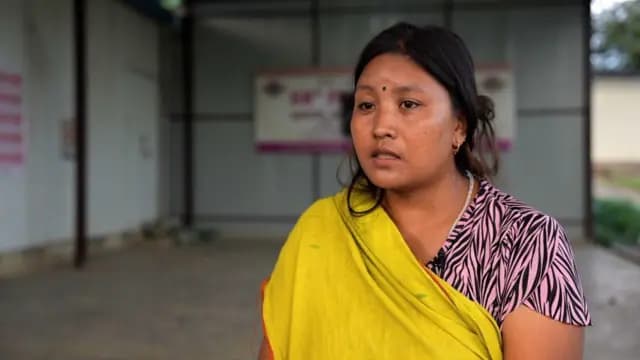We're loading the full news article for you. This includes the article content, images, author information, and related articles.
Over 57,000 people living in temporary camps in India's Manipur state face an uncertain future as a government deadline to shut down shelters approaches, two and a half years after brutal ethnic violence erupted.

NEW DELHI - Tens of thousands of people displaced by a protracted and violent ethnic conflict in India's northeastern state of Manipur are confronting a new crisis as the government has set a December 2025 deadline to close all temporary relief camps. This decision, announced in July 2025 by Manipur's then-Chief Secretary Prashant Kumar Singh, has intensified anxiety among the more than 57,000 individuals who remain internally displaced, many of whom fear returning to their original homes in a region still fractured by deep-seated animosity.
The conflict, which broke out on Friday, May 3, 2023, EAT, pits the predominantly Hindu Meitei community against the largely Christian Kuki-Zo tribes. The violence has resulted in at least 260 deaths and the displacement of over 60,000 people, marking it as one of the most severe humanitarian crises in India in recent decades. The initial trigger was a protest by tribal groups against a court order recommending 'Scheduled Tribe' status for the Meiteis, which would grant them access to affirmative action benefits, including land ownership rights in hill areas historically inhabited by the Kuki-Zo.
Since the violence began, the state has been effectively segregated, with the Meitei population concentrated in the Imphal Valley and the Kuki-Zo communities residing in the surrounding hills. This division has created invisible borders, making it perilous for members of either community to cross into areas dominated by the other. Many displaced families have expressed that they 'can't go back', citing the complete destruction of their homes and the persistent threat of violence.
The state government's plan involves a three-phase rehabilitation program intended to conclude by December. Officials have stated that those unable to return to their original villages will be moved into pre-fabricated housing units. According to government reports, thousands of these temporary shelters have been constructed. However, the plan has been met with significant concern from displaced communities, who point to a lack of clarity on the location of these new units and whether they will be safe. As of late October 2025, displaced persons' groups reported that no concrete steps had been taken to begin the resettlement process.
Life in the 361 government-registered relief camps has been dire. Inhabitants, including an estimated 25,000 children, face cramped and unhygienic conditions, inadequate medical facilities, and disruptions to education. The Manipur Commission for Protection of Child Rights has described the situation as an "absolute protection failure," highlighting severe trauma and mental health issues among displaced minors. Humanitarian groups like the Relief Committee Manipur have also raised alarms about families being separated across different camps, exacerbating their emotional distress.
The protracted violence and the Indian government's response have drawn sharp criticism from international bodies. In September 2023, United Nations experts condemned the government's "slow and inadequate response" to the human rights abuses, which include reports of sexual violence, extrajudicial killings, and torture. The European Union Parliament passed a resolution in July 2023 urging Indian authorities to halt the violence, protect religious minorities, and investigate the role of security forces and divisive political rhetoric in fueling the conflict. Human rights organizations such as Amnesty International and Human Rights Watch have repeatedly called for an end to impunity for perpetrators and for the government to address the underlying causes of the conflict.
Despite these calls, an uneasy truce persists, punctuated by periodic flare-ups of violence. The conflict has devastated the local economy, severed supply chains, and left a deep psychological scar on the population. For the thousands still living in limbo, the approaching deadline to close the camps represents not a step toward normalcy, but a leap into a future fraught with uncertainty and fear, far from the homes they were forced to abandon.
Keep the conversation in one place—threads here stay linked to the story and in the forums.
Other hot threads
E-sports and Gaming Community in Kenya
Active 7 months ago
Popular Recreational Activities Across Counties
Active 7 months ago
The Role of Technology in Modern Agriculture (AgriTech)
Active 7 months ago
Investing in Youth Sports Development Programs
Active 7 months ago